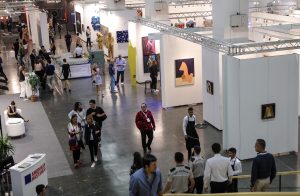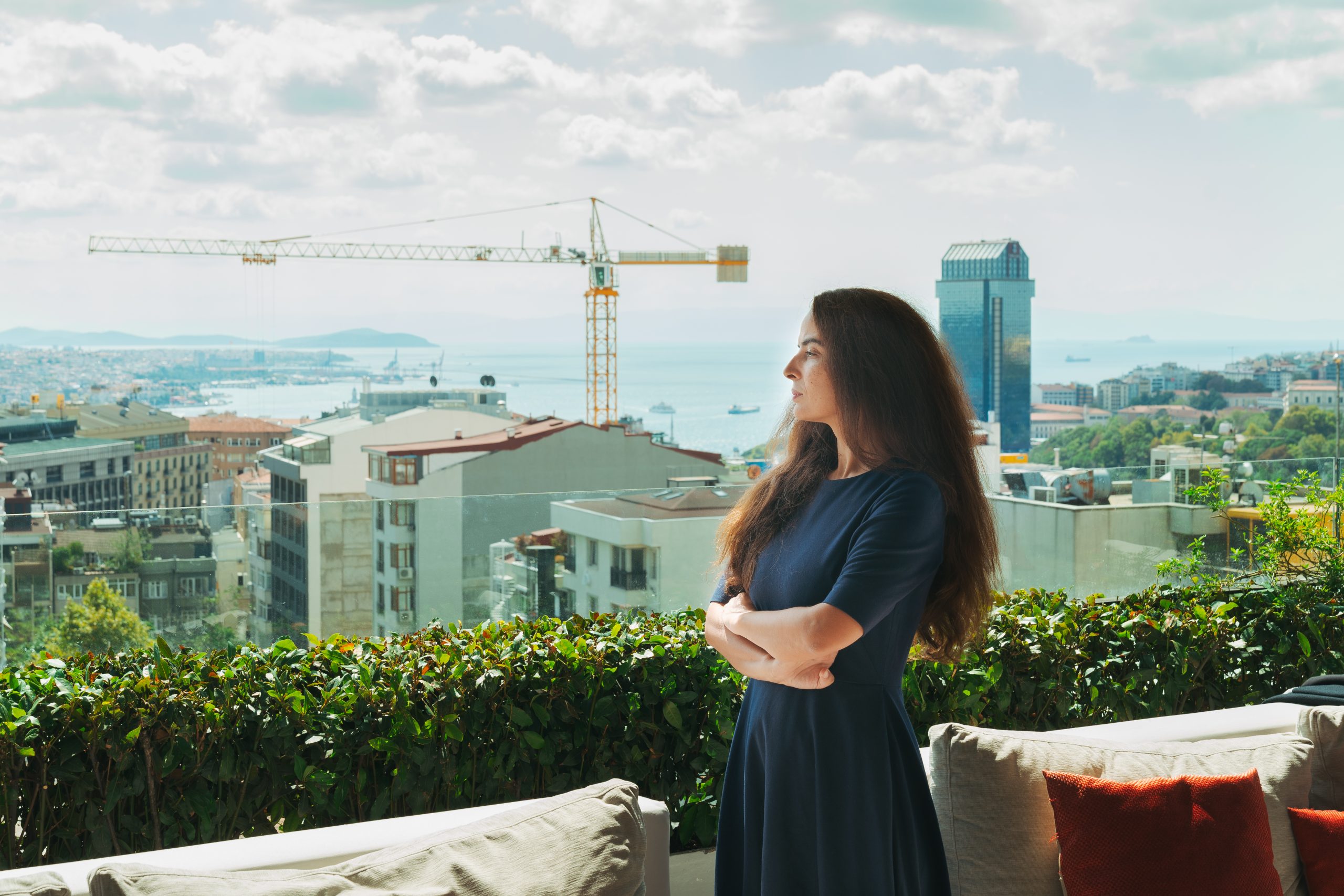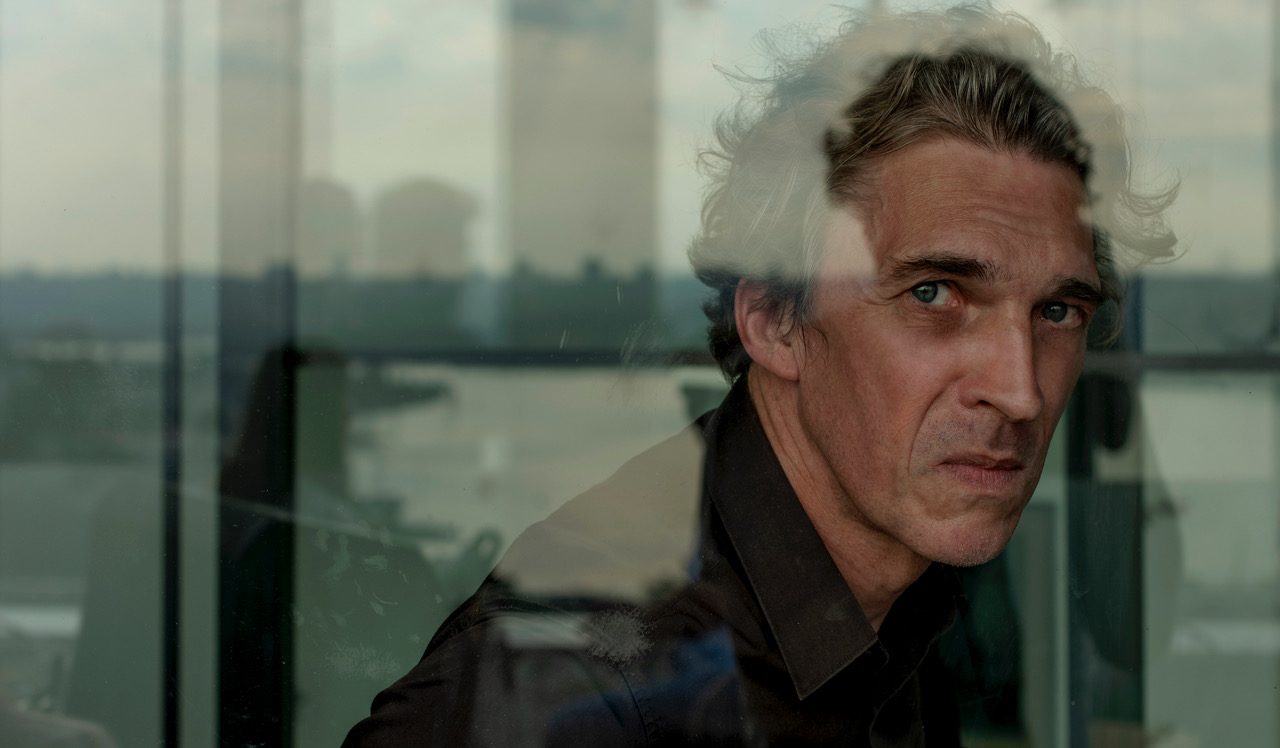Interview by Şebnem Kırmacı
This year, Contemporary Istanbul (CI) will take place between September 12 – 15 in the Istanbul Congress Center and the Convention and Exhibition Center. Touati explains how she’s looking forward to deepening CI’s existing partnerships, as well as forging new relationships with organizations both locally and abroad.
What do you mean when you refer to the “Mediterranean basin?”
I’ve done a lot of fairs around the world, and my main aim in doing Contemporary Istanbul was to place it as a regionalist event, a niche fair that’s full of soul. My dream has long been to open that Mediterranean basin and bring it to Turkey. That’s why I’ve done projects with Art-O-Rama, in Marseilles, and why we’re doing an extra-special event this year: a foreign exchange of galleries and collectors between two fairs. We asked the Delfina Foundation to do all of the panels around the Mediterranean basin theme.This is the first of three years for this project, and step by step we will reach into other countries. We’ve already been in touch with people from Africa, Asia, South America, and eastern Europe.
Do you have project spaces?
Yes, we will welcome spaces from all across the region—not institutions, but curators and artists themselves. We’re going to welcome the first art center from Malta, ThisisBlitz. We’ll welcome spaces from Greece, Lebanon, Azerbaijan, Belgrade and Tripoli. There’s one in Marseilles called Susway Project. It’s all about bringing people and ideas together to create something bigger.
So there will be an exchange of ideas between creators, leading to further collaboration?
Exactly. The aim is to take Turkish art outside of Turkey, and bring foreign art in. I’ve built a six-month program, and each month we’ll welcome 5-10 key people from the art world. Each of them will stay for a week.
Does this program have a name?
It’s called Istanbul Connection. We’ve already welcomed a museum director from Mexico, a project space director from Budapest, and some very prestigious collectors from Paris.
Will Istanbul Connection continue after this year’s fair ends?
Yes. It’s like a campaign, which I believe is the best way to communicate on a deeper level. Based on my own experience, you need to work with people.
Is this your first time in Istanbul?
I arrived here 4 years ago.
The Western media portrays Istanbul very differently from how it really is—always in an oriental manner and, especially recently, in a negative light. What do you think?
I was invited to Istanbul by CI four years ago, when Marc-Olivier Wahler was the fair director, and I was amazed by Turkey. It was so magical. You’re right that Turkey is portrayed very negatively in the European press. But my experience has been completely different. So now, whenever I invite someone to Turkey, I like for them to have the positive experience that I had. I want them to arrive a visitor and leave an ambassador. And that really works for us. Everyone who spreads the word encourages more people to come and experience Istanbul for themselves.

Tell me exactly how you think Turkey is portrayed in the Western media. How biased is it?
My father is Tunisian, and my mother is French, so I know both sides. I’ve seen how a Western nation thinks about third-world countries, and I’ve observed the political agendas involved. I also worked for 5 years in Mexico, which was portrayed as a very dangerous place to be, with all sorts of crimes—a land of drugs and murders. When I first arrived in Mexico City, I thought I would be kidnapped at the airport. I was really scared! But now that I know Mexico well, I love it.
So Mexico was not dangerous at all?
Of course, you have to be careful. But it was not one bit of what it was portrayed to be. Mexico City is one of the most beautiful cities I’ve been to in my entire life. People can be ignorant, and the media keeps telling the same stories. The same goes for Paris. We don’t have strikes throughout the entire city. But that’s what the press would have you believe.
So the media distorts reality in a way?
Yes, totally.
Correct me if I’m wrong, but when Contemporary Istanbul was first launched, its mission was to be the leading art fair in the Middle East, right?
Yes, yes.
Under your artistic direction, has CI changed its vision and turned its gaze more toward the Mediterranean?
We have to consider how Turkey has been historically placed. Sitting between two continents, it’s an extremely strategic locale. When I first visited Turkey, I was impressed by the strategy of Turkish Airlines, and it got me thinking: why does Turkish Airlines have direct flights to so many different countries? It might be the only airline to execute this strategy so widely. It also means that there must be a political reason behind the strategy.

What message do you take from the phrase “We are close to everywhere.”
Yes, Turkey is close to everywhere, and it means that everyone in the world can stop by on their way to somewhere else. Many people stop in Turkey on their way to India, Asia, and even Africa. So in the airport, you encounter people from everywhere: traditional Sikhs, Orthodox Jews, Europeans, Americans. Some stay longer, and others just stay in the airport. But the message is that Turkey is open to the world, and for me, the airport metaphor is perfect for what I’m trying to do with CI.
Isn’t it difficult to operate on that level? Isn’t it too much work?
It’s complicated, but it’s not difficult. You certainly have to be ambitious, otherwise it’s not going to work. We’re going to have more and more ambassadors every year, people who will take care of their respective regions. We have someone for Asia, someone for Africa, someone for South America. It works step by step.
So can we call this year’s fair the introduction to a long-term project?
It’s the introduction, yes.
Give me an idea of what’s going on with your ambassadors.
In Africa, we’re partnering with someone in Zimbabwe who is gathering some galleries from across Africa. We’re working with someone in Taiwan gathering galleries and collectors from east Asia, and someone in South America doing the same. Some are curators of museums; others are museum directors. We started working in February of this year, so this year’s fair is a mere glimpse of what’s going to happen next year.
The Turkish art market was booming from about 2005 through the 2010s. But then— boom! 2013 happened, everything declined, and the whole outlook of the city changed. This autumn looks very hopeful in terms of arts and culture. But how does this trajectory relate to your vision for CI?
Change is going to come. Collectors, artists, curators, institutions, CI, İstanbul Biennial they all have to work together to make this shift happen. Collectors have to buy from the galleries and support the artists. Everyone plays their role. But with patience, the change will come.
Mexico City is a good example of how the art world can come together to make things work. France is another, because the collectors seriously support the artists. There are strong galleries and museums in France because the collectors are supportive and buy from them regularly. It’s still something we’re figuring out here in Istanbul. But we do have all of the components we need in Turkey. We have the infrastructure. We have huge potential. We just need people to gather together. It’s the only thing holding us back.


That’s a very good observation. Perhaps people are not very supportive of each other in the arts and culture industry here in Turkey. Thinking of my own experience as an arts and culture journalist, publications find it hard to persist. They need advertising, and getting enough advertising poses a problem. The same applies for galleries, doesn’t it?
Yes. In the art world, you have to understand that we’re all in this together. We have to support each other. Part of CI’s role is to educate people through our talks and panel discussions. Educating people is where it all starts.
Can you explain some of the highlights of this year’s fair?
We have panels with Salma Tuqan, Deputy Director of the Delfina Foundation, and with the Art-O-Rama International Fair of Contemporary Art in Marsellies. We have artist residency programs welcoming Alexandra Pace, the Director of ThisisBlitz in Malta, and a renowned artist from Pakistan. The residency will create links between Turkey and the global art world, which is important. Then there’s Plug-in, which has been going for a while now, and this year’s Plug-in will be more political.
What’s a work of art that has taken your breath away?
Chopin. I’m into classic music.







